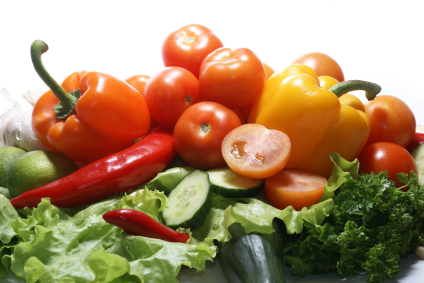
There are a few different hydroponics systems out there that you can use to grow vegetables. For most people however, the water culture hydroponic system works the best as it is low cost, takes up a very small amount of space, and is very easy to use and maintain.
Here are some simple steps to follow on how to grow hydroponic vegetables in your own home.
Find a suitable water reservoir. This is generally an unused fish tank, or something of comparable size.
Light proof the reservoir. Your hydroponics vegetable system should be light proofed using dark garbage bags, fabric, paper, or black spray paint. This is to keep the minerals and the roots of the plants from being overcome by the light through the glass.
Cut a piece of Styrofoam, or other floatable material to fit well in the reservoir. You want this to float easily on the water level, so make sure it is not too snug of a fit. You also don’t want it to be easily jostled about, so make sure it is not too loose of a fit.
Measure the bottom of the net pots you plan to use, and cut out holes in the hydroponics floater. The easiest way to do this is to lay out the net pots on top of the Styrofoam in the formation you want, and then trace with a marker around the bottom of these pots, and cut out along those lines. You want to space these net pots as close together as you can to maximize how much of a crop you will be able to yield from each system. Make sure not to get them too close together, however, as this will cause light absorption problems when the plants begin to mature.
Install the air pump. This is a very important step, and you want to have a pump that will get oxygen to your plants as they need it. Remember, they don’t have soil to help them with this part of the growing process, so the oxygen pump has to be the right size for the reservoir of your choice.
Add minerals as needed. Some crops are less finicky about the minerals the need and will simply rely on the oxygen pump to get what they need. Other plants will require supplements to the water. These can be in power, liquid or tablet form and are usually just dropped in the water on a weekly. If your plants in your hydroponics vegetable system begin to struggle, consider increasing or changing the minerals you are using.
Enjoy the fruits, or vegetables, we should say, of your labors!
As you can see, the set up of how to grow hydroponics vegetables is quite simple. The initial set-up can be a bit time consuming, but it is not hard to understand, and definitely not hard to maintain once everything is in place. Once everything is completed, you will have a year-round supply of fresh produce to use whenever you desire!